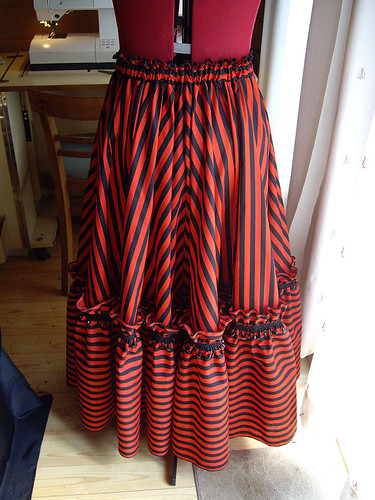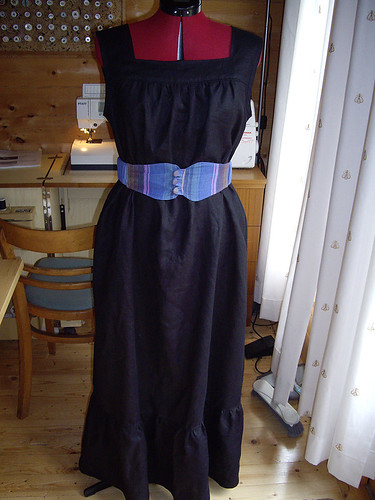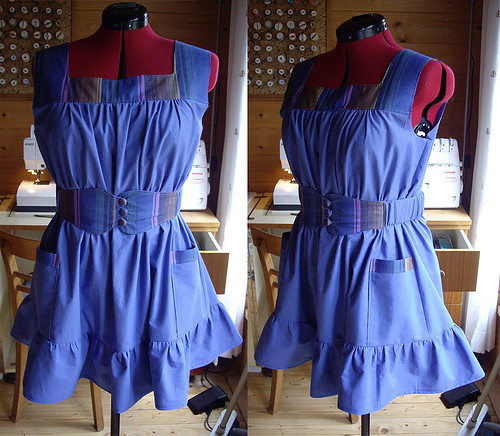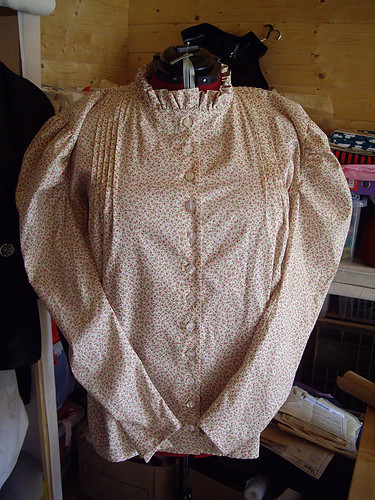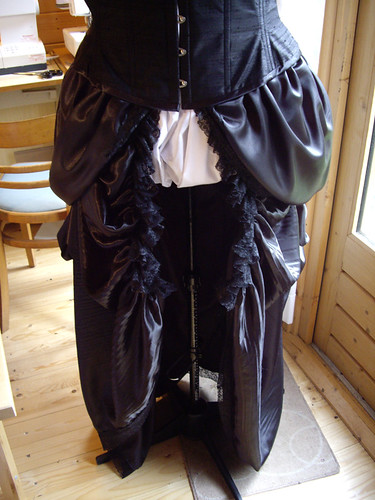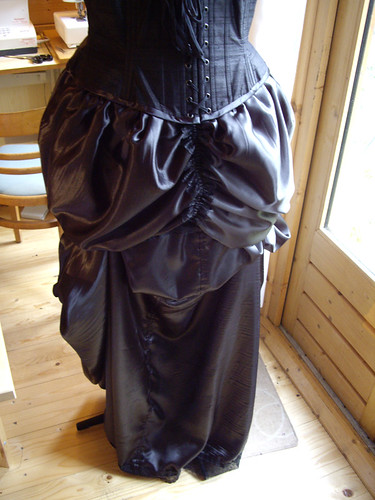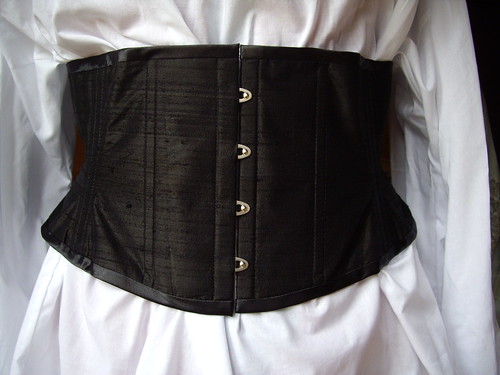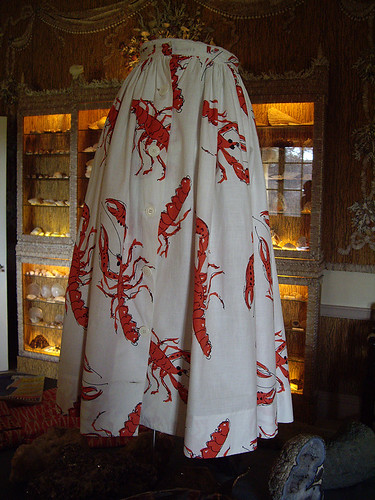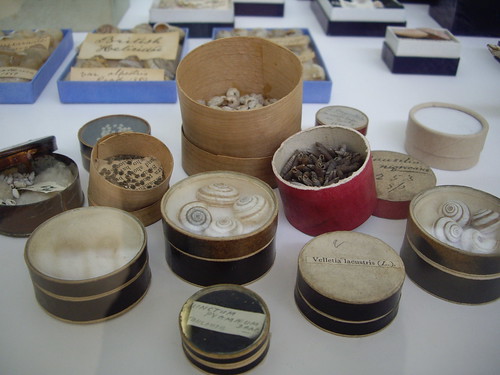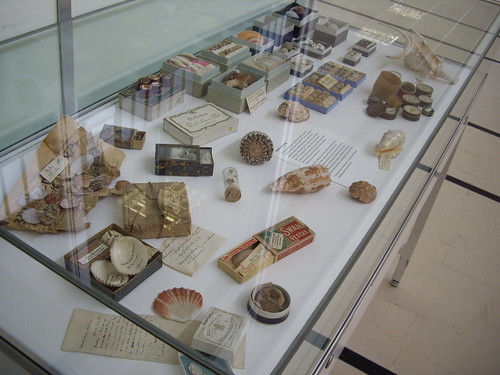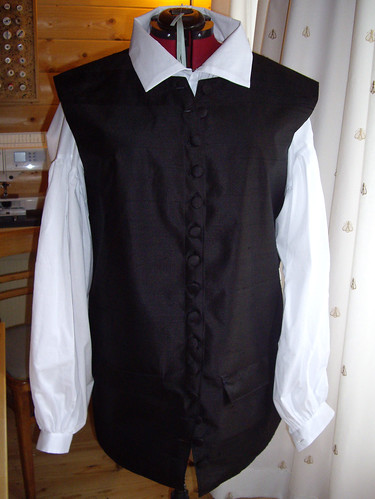The title says is all really – this is Simplicity 2207, my striped steampunk skirt!
Somewhat eye-bending, but I knew the stripes on the skirt would end up going in all directions, so I deliberately placed them vertically on the front and horizontally on the ruffle.
Both edges of the ruffle are finished on the overlocker, with the “raw” edges left visible. Over the gathered join is four metres of beaded trim, with four metres of braid stitched over the top. I think I spent more on the trimmings than I did on the fabric!
(This was sadly evident as I was sewing – the black stripes are printed rather than woven, and I ended up with very grubby hands. Yuk.)
I attempted to put pockets in the side seams, but that turned out to be a lesson in reading the entirety of the instructions before you start. The waistband has a somewhat unusual construction, so the two sides of my pockets didn’t match. Not wishing to rip out all the overlocking and start again, I simply chopped off the pocket pieces and pretended I didn’t want pockets after all.
The back of the skirt is twice as full as the front, and has an elasticated waist. I have a horrible suspicion that, despite measuring, I’ve cut the elastic a little bit too short. Thanks to the waistband construction I can’t easily get in and change it, so for now I’ve adjusted my dress form to be a little bit bigger than me, in the hope that it’ll stretch out a bit before I wear it. Fingers crossed.


